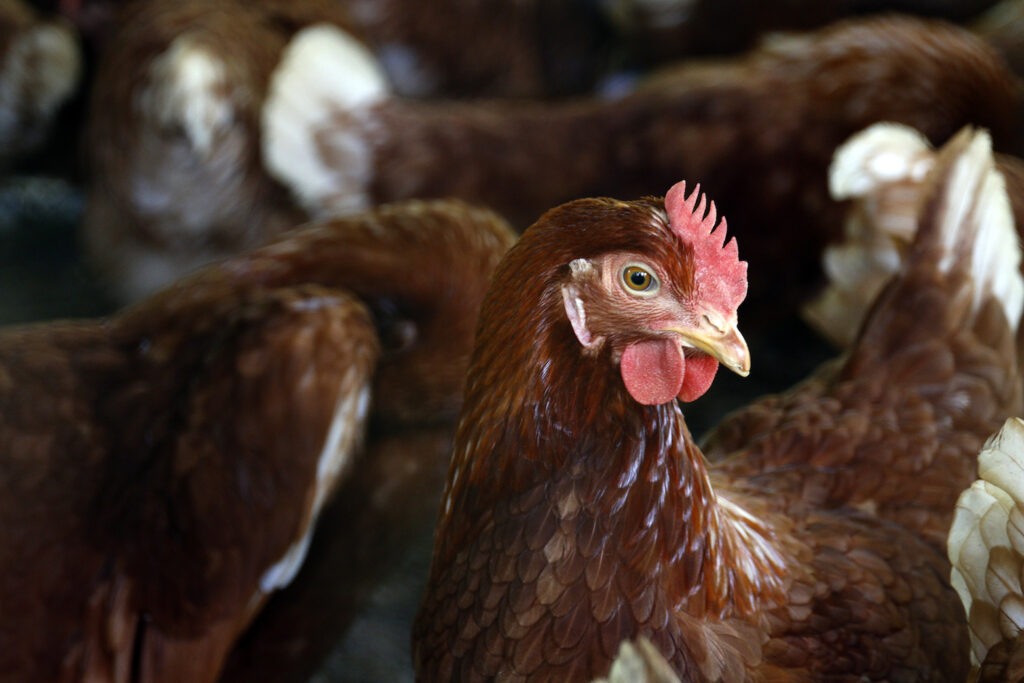Virus lurks in birds
CSU laboratory tracks highly pathogenic avian influenza

July 17, 2023
LAST YEAR, CONSUMERS bemoaned the absence of eggs at grocery stores and sky-high prices for the few cartons available. More recently, shoppers have been relieved to find shelves restocked and egg prices dropping.
But the main culprit in that interruption hasn’t gone away. In fact, it may be here to stay, said Dr. Kristy Pabilonia, a veterinarian, professor, and director of clinical diagnostics at Colorado State University.
As head of a CSU laboratory that helps track the spread of animal diseases nationwide, Pabilonia has had a front-row seat in observing the worst outbreak of avian influenza in U.S. history.
The current strain first infected commercial and backyard poultry in the United States in February 2022. Since then, highly pathogenic avian influenza virus has resulted in the deaths of nearly 60 million commercial chickens and turkeys across the country – and more than 6 million in Colorado alone. These birds have died from the virus or have been euthanized in an effort to stop the spread of the highly contagious and lethal pathogen. “If one bird has it, we’re going to consider the whole flock infected,” Pabilonia said.
The avian influenza outbreak shrank egg supplies and has been devastating to the nation’s poultry industry, whose producers have scrambled to restock layer hens and resupply grocery shelves. Poultry feed and farm fuel costs have added to the strain.
Avian influenza is carried by wild birds, Pabilonia explained. It is easy for wild and domestic birds to mingle, and virus may be spread by even a bit of feces or a speck of saliva. For that reason, commercial poultry, backyard chickens, and wild birds themselves all are at risk for infection and disease.
In fact, highly pathogenic avian influenza virus has been detected in a growing number of mammals, including bobcats, bears, dolphins, seals, mountain lions, and foxes. Health officials have reported a handful of human cases globally, but the U.S. Centers for Disease Control and Prevention considers the risk of infection low for the public.
The CSU Veterinary Diagnostic Laboratories, which Pabilonia directs, is one of 35 Level 1 diagnostic laboratories in the National Animal Health Laboratory Network, charged with disease surveillance and reporting to the U.S. Department of Agriculture. In its role, the laboratory constantly tests for diseases of concern, ramps up testing during outbreaks, advises health officials, consults with industry, and provides public education about infectious diseases. These days, her laboratory typically processes about 20 samples per day – and as many as 150 – to check for avian influenza virus, Pabilonia said.
Alarmed by the outbreak, farms big and small have increased biosecurity by protecting poultry houses and coops, limiting visitors, and using strict disinfection protocols; these measures have helped quell the outbreak. Backyard flock owners should take similar steps, Pabilonia advised.
The current outbreak has been such a concern that many county fairs and livestock events canceled poultry shows last year, and the fate of this summer’s shows is uncertain, Pabilonia said.
“This virus is very easy to transmit, so the outbreak has been really, really challenging,” she said. “We can’t remove the virus from wild birds, so there’s always a risk for spillover of the virus to commercial and backyard poultry and occasionally to mammals. This is likely our new normal, and we’re just not entirely sure what our new normal looks like.”
SHARE
